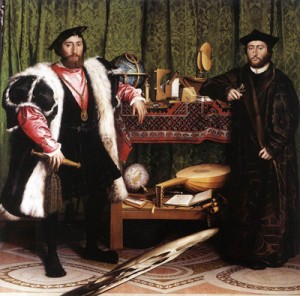02 May They say a picture paints a thousand words…
I would definitely agree with that statement. A painting can trigger an emotion, a feeling, a reaction that you may not have known was even there, and it can sometimes only come to the surface when you see the painting ‘in the flesh’.
Many school trips and art A-level lessons stick in my mind from my education. Whether it was learning the meaning of a painting, the reasons for a certain object’s placement, or the hidden secrets of a picture … certain things I will always remember.
In a digital age where tablets, laptops and smart phones outnumber books in the household, are we depriving ourselves of those feelings and experiences associated with powerful imagery?
Whilst it’s easy enough to look up an image online, it’s just not the same and we’re all guilty of making this convenient shortcut. I recall that the last time I stepped into an art gallery was to shelter from a gale force wind one New Year’s Eve in London. Whilst there, I happened to stumble upon an image I had based a whole case study on during my A-level art course, and at the time had never seen for real. A case study written about the same feelings, meanings and trickery associated with art, but never even experienced myself.
That picture was The Ambassadors by Hans Holbein the Younger (1533).
It was a large portrait of two men, with a still life in between and an unusual image in the foreground. I still vividly remember seeing the painting for “real” for the first time to this day. It was quite scary, as I hadn’t realised the sheer physical size of the work, after all – I had only been studying it from a book. Added to this was the fact that old fashioned paintings gave me a creepy feeling, and my perception was that their eyes appeared to be following me around the room and the figures will, at any moment, start moving within their frames like they do in the Harry Potter films. It also sparked my memory as to the meanings of the objects and the unusual foreground image.
The detail in the foreground was of an anamorphic skull. A seemingly distorted object, but one which hid its true appearance. To look at the picture head on you couldn’t make out what the object was. It’s not until you viewed the object from the side of the painting that you can see that it’s a skull. A clever technique which is not only very impressive but highly unusual.
I like traditional art. And traditional art with that extra level of intrinsic interest I like even more. But most of all, like many others I expect, I like the effect art has on me. So… does a picture paint a thousand words? You decide …




Sorry, the comment form is closed at this time.